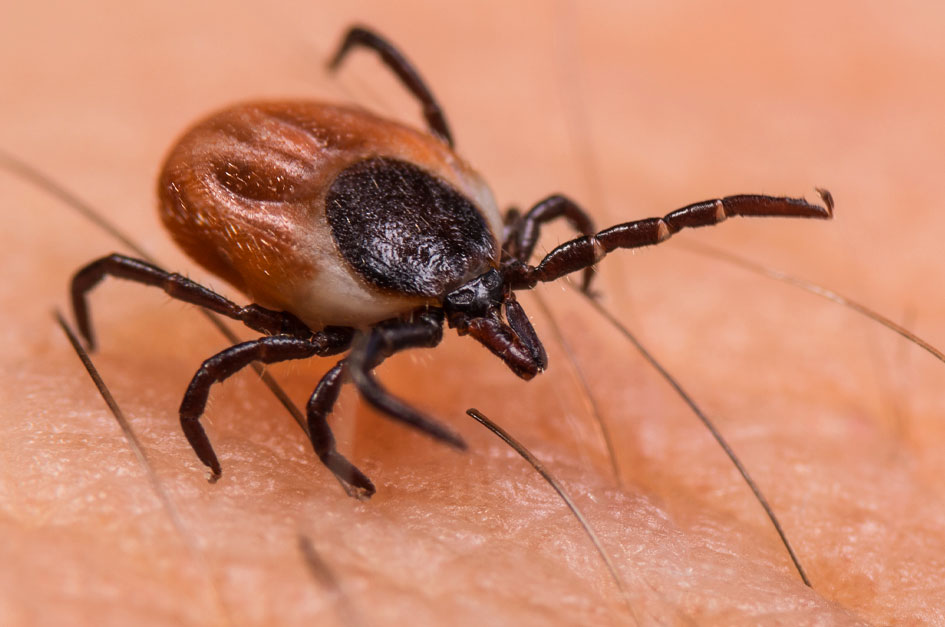What's New At Evans Pest Control
Learn more about Evans Pest Control capabilities
The Tick – Preventing This Scary Parasite From Harming You And Your Loved Ones
Is A Tick An Insect?
Actually, ticks are part of the arachnid family. They are relatives of spiders, so they are not insects at all. You can notice that they have four pairs of legs, just like spiders, and no antennae. Ticks wait on the top of a blade of grass, or bush for a passing animal or human to grab on to, or they may drop from their perch onto a passing animal.
How Do Ticks Bite You?
Unlike biting insects, ticks feed for long periods of time. They bury their curved teeth deeply into your skin. They remain securely attached for many days. It is an important fact to remember that ticks typically require 24-48 hours of feeding before they can successfully transmit infections like Lyme disease, so quick identification and removal is crucial.
Where Are Ticks Likely To Be Waiting?
Ticks live in grassy, bushy, and wooded areas, and maybe even on your pets. If you are walking through tall grass, you may pick up a tick. On paths that humans and animals frequent, you are likely to pick up a tick parasite. Many people pickup ticks in their backyard. Ticks can be found everywhere, and especially on grassy paths frequented by animals.
How Can I Know A Tick Is Biting Me?
When you are being bitten by a tick, you probably will not feel anything. Ticks inject an anesthetic into the skin at the point of entry. If you have a tick crawly on you, you may feel it. If this happens, strip off and have a good look under your arms, in and around your ears, between your legs, even your belly button. If you see a tick crawling on you, there may be others, so examine your body carefully.
What Should I Do If I Find A Tick Attached To Me?
The important thing to do, is to remain calm and remove the tick as soon as possible. Here is the procedure for removing ticks from the Center for Disease Control:
1. Brush away your skin’s hair, then use very fine tweezers to grasp the tick as close to the skin’s surface as possible, and make sure you are not on the body of the tick.
2. Once you have a good grip, pull upward with a steady, and even pressure. Don’t twist or jerk the tick; this can cause the mouthparts to break off and remain in the skin. If this happens, remove the mouthparts with tweezers. If you are unable to remove the mouth easily with clean tweezers, leave it alone and let the skin heal.
3. After removing the tick, thoroughly clean the bite area and your hands with soap and water then with rubbing alcohol.
4. Never try to crush a tick with your fingers. Dispose of a live tick by putting it in alcohol, or by putting it tightly wrapped in tissue paper, and flushing it down the toilet.
During The Next 30 Days Watch For These Symptoms
Depending on the type of tick, and the germs they are carrying, they need to be actively feeding on you for often days. Your risk of Lyme disease is very low if a tick has been attached for fewer than 36 hours. Check all over for ticks daily and remove them as soon as possible. If you notice these symptoms after a tick bite, call your doctor:
• Rash
• Fever
• Fatigue
• Headache
• Muscle pain
• Joint swelling and pain
As always, please consider calling Evans Pest Control. The experts at Evans Pest Control are always willing to help with your pest control questions. Fill out the form below, or call us at (267) 582-2687
https://www.evanspestmgmt.com/ticks-and-what-to-do-if-you-get-a-tick-bite.php
Get a Free Phone Consultation
Having a bug problem? Talk to a professional right now!
Yes, We Can Help
Drop us a message and we will help you today!

